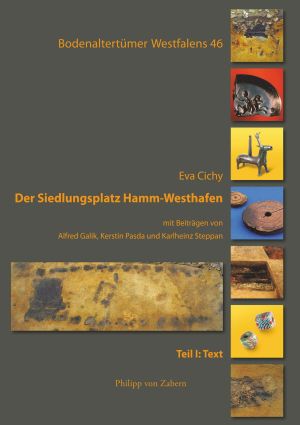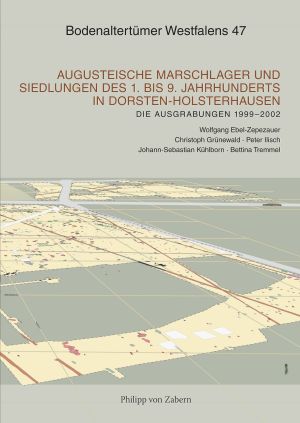Grünewald, Christoph
Der Siedlungsplatz Hamm-Westhafen: Teil I: Text
In the area of the western harbor of Hamm, traces from the pre-Roman Iron Age, the Roman Imperial Period and the Early Middle Ages were uncovered on an area of 4.2 ha. However, the outstanding significance of the excavation results from the high medieval settlement findings. Not only does the main building of the farmstead reach a length of more than 35 m – an outstanding size compared to the mass of contemporary houses –, but also the outbuildings, cellars and wells have dimensions that go far exceed the usual peasant needs. The find material confirms this impressively. The farm must have had a crucial importance in its region. Supra-regional comparisons suggest that the complex was used as an Ober- or Meierhof. Nevertheless, there are no indications for a transition to a noble estate.
The thesis was accepted as a dissertation at the Ruhr-Universität Bochum in 2005.
Volume 2, see here.
Augusteische Marschlager und Siedlungen des 1. bis 9. Jahrhunderts in Dorsten-Holsterhausen: Die Ausgrabungen 1999 bis 2002
The LWL-Archaeology for Westphalia carried out its largest excavation to date from 1999 to 2002 at the Kreskenhof in Dorsten-Holsterhausen. On 120,000 square meters, five Roman encampments as well as imperial and medieval settlement traces were investigated with several thousand finds and features.
Four of the five Roman camps were large enough to accommodate the soldiers of more than one legion. The first evidence of Roman occupation dates back to the time of the Drusus campaign. Among the finds, a purse filled with 36 silver denarii is particularly noteworthy, which contained the legionary pay of two months and dates back to the governor period of Varus in Germania.
Only half a century after the withdrawal of the Roman troops a small Germanic settlement developed in Holsterhausen with pit houses, granarys as well as larger post-built house. The pit houses were moved on after some decades, which is unique so far – as well as the large-scale distribution of the buildings within the Germanic settlement.








